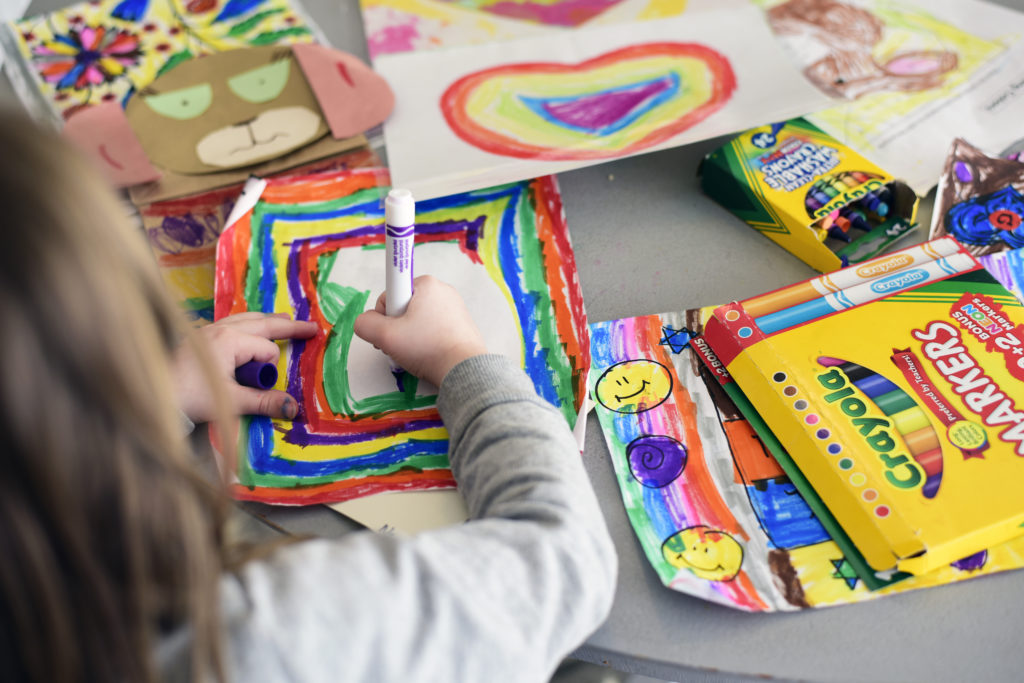
What is your relationship to your child’s artwork? How important is it to you?
Do you hang it on the fridge after a compulsory, “Good job!”? Or do you say, “What is it?” and try to inconspicuously change the subject?
Have you looked carefully at your 3-year-old daughter’s scribbles?
What do you say when your son hands you his project from preschool?
Are you able to show a true interest in a drawing done by your 6-year-old?
Have you noticed the colors your child is enjoying at the moment?
Art is about Hashem’s creation, with all of its beauty, harmony, and color. All the wondrous things which affect our senses and moods, and reveal our inner self and our outer world.
If you are thrown off by any of these questions, please know that you are not alone. Most parents don’t understand art, let alone Jewish art. If you have taken any courses on art appreciation or early childhood education, or you are an artist yourself, you will have the advantage in this subject, but most of us do not. It was never really part of our education. We are busy with other practical situations. Art is nice, but we don’t truly understand it.
So, let’s take a moment to look at art from a deeper angle. Art is much more than we think it is. It starts with our eyes noticing the world around us. It is what we see. Not only that, it is what we feel and what we take in, or what we perceive from our surroundings and education. Now, to take it one step further: art is about Hashem’s creation, with all of its beauty, harmony, and color. All the wondrous things which affect our senses and moods, and reveal our inner self and our outer world. This idea needs a bit of reflection.
Most of us don’t spend much time thinking about art in our daily lives. Yet, how good might it be to instill the importance of the visual wonders of Hashem’s creations in our children? How colorless would it be if a child grew up without being shown the glory of creation? Would his emotional development be complete without the appreciation of Hashem’s handiwork?
The roots of Jewish creativity are within each Jewish neshama. They are part of our connection to Hashem. That extra ability of the Jewish imagination is what links us to Him. We, as Jewish people, can “envision” One G-d, without an intermediary. We don’t need crosses or Buddhas. We have the ability to “picture” One G-d in our minds and hearts. This is an important concept, and it is the basis for feeling good about Jewish art and what our precious children produce.
Did you know that our source for Jewish art and craftsmanship is the Mishkan? Our Divinely-crafted Sanctuary in the desert brought inspiration and uplifted one’s eyes and thoughts. Take a moment to look over illustrations of the holy Mishkan. The design, proportions, and materials are inspiring beyond any other major structure in history.
Can you see a tiny piece of supernal glory in your child’s scribbles? Can you appreciate her efforts at revealing her heart on paper? They may appear messy and meaningless at first glance. Look for what is behind those scribbled lines, and simply give your child a warm dose of love and respect for a few extra minutes.
Art gives expression to children before they can read and write. Until the invention of the printed word, spiritual and/or religious messages were mostly conveyed through art. Let’s tap into that idea. Even a scribble can tell us about the heart and soul of our child. Does he draw circles around the edges in a very organized fashion, or does she make lots of apparently random lines in the center of the paper, while she exercises her fine motor control? Your child’s drawings may not evoke spiritual interpretation, but they do show us a little of the essence of the child.

Art is the G-d-given language of visual and tactile senses. So, begin with appreciating your child’s lines and scribbles, and then talk to him about what he did. Use his artwork to segue into conversions about related topics: “Your drawing with the beautiful flowers reminds me of the flowers we had last Shabbos.” “The way you colored the girl’s red dress was done so smoothly. How did you do that so carefully?” “The car you painted looks likes it was put together with 5 squares. How did you decide to paint it like that? What a great idea!”
Children have a great ability to create drawings, paintings, and all types of artwork…it only needs to be let out.
Do not do the work for them. If you want to, you can show them how to draw an object on another paper, and let them do it themselves. Help them grow confidence, and they will soar!
So, remember, your child’s artwork is:
- A reflection of him and the stage of development he is at
- An avenue to give form to her inner feelings and/or portray how she sees her world
- A way to relax and take him temporarily away from daily concerns
- A way to develop her thinking mind, as she plans and arranges shapes, lines, colors, mood, and subjects
Appreciating your child’s artwork connects you with your child and gives you a glimpse into his neshama and the images and forms with which he views the wonders of his Jewish life.